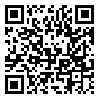Fri, Nov 15, 2024
[Archive]
Volume 17, Issue 4 (December 2020)
IJMSE 2020, 17(4): 103-129 |
Back to browse issues page
Download citation:
BibTeX | RIS | EndNote | Medlars | ProCite | Reference Manager | RefWorks
Send citation to:



BibTeX | RIS | EndNote | Medlars | ProCite | Reference Manager | RefWorks
Send citation to:
Azarbarmas M. Modeling the Dynamic Recrystallization by Using Cellular Automaton: The Current Status, Challenges and Future Prospects, a Review. IJMSE 2020; 17 (4) :103-129
URL: http://ijmse.iust.ac.ir/article-1-1595-en.html
URL: http://ijmse.iust.ac.ir/article-1-1595-en.html
Abstract: (10343 Views)
Mechanical properties of metals are substantially dependent on the microstructure, which can be controlled by thermo-mechanical parameters such as the temperature, strain and strain rate. Hence, understanding the microstructural evolution of alloys during the hot deformation is crucial for engineering the metal forming processes. The main objective of this work is to present an overview of Cellular Automaton (CA) modeling for predicting the microstructure of alloys during the dynamic recrystallization (DRX) phenomenon. In this review paper, first, overall descriptions about the DRX phenomenon and CA modeling were presented. Then, the CA modeling procedure was compared with similar methods. Meanwhile, related studies in the field of the DRX simulation by using the CA modeling were evaluated. Four main stages of the model were analyzed in terms of the “nucleation”, “growth”, “topological changes” and “texture evaluation” steps. Most important limitations including the calibration sensitivity, limitations in continuous DRX modeling, ignoring microstructural effects on the deformation behavior, limited applications and database as well as repeated results were discussed and then objective suggestions for the further development were provided. Finally, future prospects in CA modeling of DRX were presented in the last section.
Type of Study: Research Paper |
Subject:
simulation
Send email to the article author
| Rights and permissions | |
 |
This work is licensed under a Creative Commons Attribution-NonCommercial 4.0 International License. |






